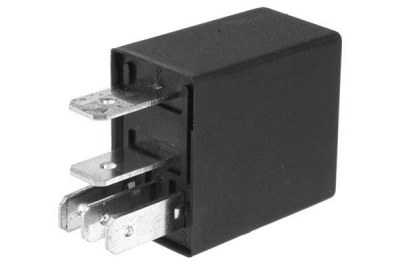What does the ABS relay do?
The ABS (Anti-lock Braking System) relay is an important component in the ABS system of a vehicle. The ABS system is designed to prevent the wheels from locking up during hard braking, which can cause loss of control and potential accidents. The ABS relay plays a crucial role in ensuring the proper functioning of the ABS system.
The ABS relay is responsible for controlling the power supply to the ABS system. It acts as a switch that controls the flow of power from the battery to the ABS system, allowing the ABS system to function properly. When the ABS system is engaged, the ABS relay sends an electrical signal to the ABS control module, which activates the ABS solenoid valves to adjust brake pressure and prevent wheel lockup.
If the ABS relay fails or malfunctions, it can cause issues with the ABS system. The most common symptom of a faulty ABS relay is an illuminated ABS warning light on the dashboard. This indicates that there is a problem with the ABS system and it is not functioning properly. Other symptoms of a faulty ABS relay can include reduced braking performance, longer braking distances, and a pulsating brake pedal when the ABS system is engaged.
Learn more about the ABS system >
Causes of a failing ABS relay
Like many other vehicle components, the effectiveness of your car’s ABS relay will degrade over time. This is due to prolonged and frequent use and aging of the ABS relay contacts, wiring connections, ABS computer relay driver circuit failure and surrounding ABS components degrading.
Symptoms of a failing ABS relay
- ABS light on – The ABS light is your vehicle’s way of warning you there is a problem with your ABS system. If the ABS light is on during a Warrant of Fitness (Wof), then by law your car will fail the WoF due to the safety concerns surrounding your ABS braking system fault. When the ABS relay or pump malfunctions, the light will illuminate. It will usually stay on until the problem is fixed.
- When the ABS light turns on, a fault code will be saved to your vehicle. These codes can be read with diagnostic tools, allowing for a quick diagnosis of the problem. Get a fault code scan >
- ABS system failure – If your ABS system is unable to pressurise brake fluid, it may fail altogether. Signs of a failed ABS system include ABS light always ON, on your dash, the car not braking correctly (brake pedal feels different to normal), or loss of control while braking.
- Reduced braking performance – A failing ABS relay can cause reduced braking performance, especially during hard braking. The ABS system may not function correctly, which can result in longer braking distances and increased stopping time.
- Pulsing brake pedal – Another symptom of a failing ABS relay is a pulsating brake pedal when the ABS system is engaged. This occurs when the ABS system is trying to prevent wheel lockup during hard braking, but the relay is not functioning correctly.
ABS Relay Replacement in Hamilton
Are you in need of an ABS relay replacement? If so, we can help you.
If your ABS light is on, one of our qualified, experienced, and trustworthy team of mechanics can run a diagnostic scan on your vehicle. This will allow us to quickly diagnose the fault in your ABS system. From there, we can quickly and effectively fix the problem. If your ABS relay needs replacing, we can remove it and equip your vehicle with a new one.
A functional ABS system is important as it keeps you in control of your vehicle while it is braking. For ABS relay replacement in Hamilton, contact Grimmer Motors today!

